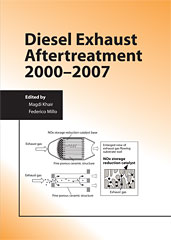Technical Paper
A Numerical Analysis of Terrain and Vehicle Characteristics in Off-Road Conditions through Semi-Empirical Tire Contact Modelling
2024-04-09
2024-01-2297
In the last decades, the locomotion of wheeled and tracked vehicles on soft soils has been widely investigated due to the large interest in planetary, agricultural, and military applications. The development of a tire-soft soil contact model which accurately represents the micro and macro-scale interactions plays a crucial role for the performance assessment in off-road conditions since vehicle traction and handling are strongly influenced by the soil characteristics. In this framework, the analysis of realistic operative conditions turns out to be a challenging research target. In this research work, a semi-empirical model describing the interaction between a tire and homogeneous and fine-grained soils is developed in Matlab/Simulink. The stress distribution and the resulting forces at the contact patch are based on well-known terramechanics theories, such as pressure-sinkage Bekker’s approach and Mohr-Coulomb’s failure criterion.

